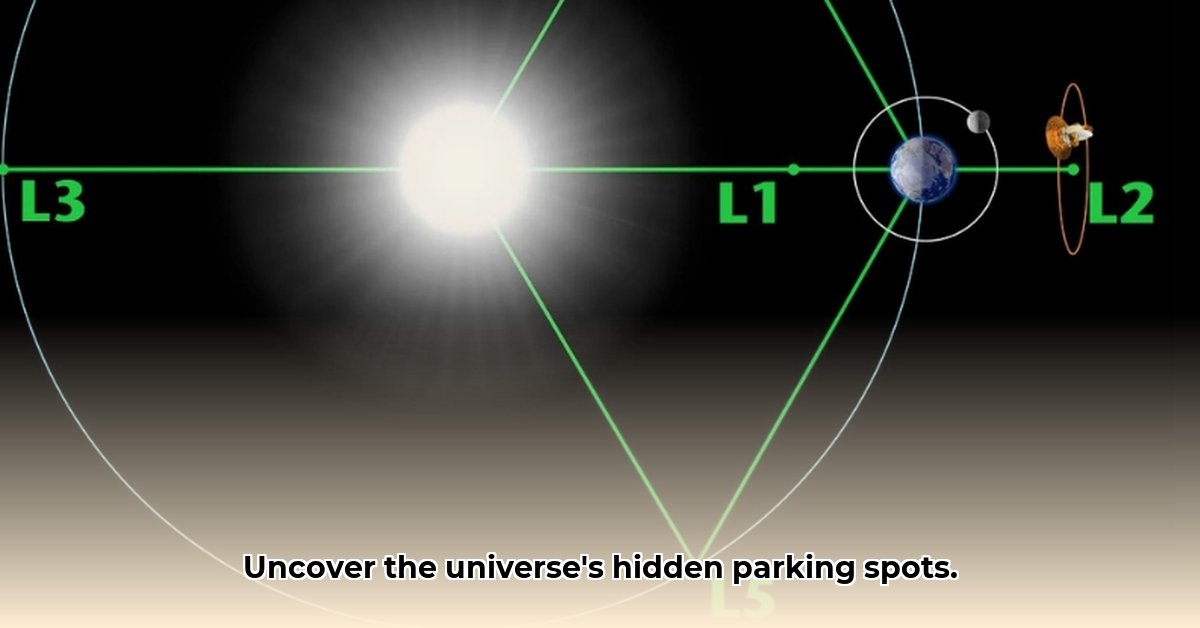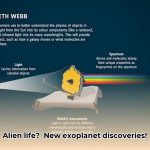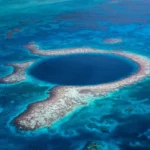Have you ever wondered where spacecraft “park” in the vast expanse of space? The answer lies in Lagrange points – unique locations where the gravitational forces of celestial bodies create a balanced environment, allowing spacecraft to maintain their position with minimal fuel consumption. These “cosmic sweet spots” are revolutionizing space exploration, offering unprecedented opportunities for scientific discovery and future missions.
Unveiling the Secrets of Lagrange Points
Lagrange points are locations in space where the combined gravitational forces of two large bodies, such as the Sun and Earth, equal the centripetal force required for a small object to move with them. This creates a point of equilibrium where spacecraft can effectively “hover,” expending very little fuel to maintain their orbit. These points are named after Joseph-Louis Lagrange, an 18th-century mathematician who first described them.
The Five Lagrange Points: A Cosmic Balancing Act
There are five Lagrange points in any two-body system, each with its own distinct characteristics:
- L1: Located between the Sun and Earth, L1 provides an unobstructed view of the Sun, making it ideal for solar observatories.
- L2: Situated on the opposite side of Earth from the Sun, L2 offers a stable, shielded environment for deep-space telescopes.
- L3: Positioned on the opposite side of the Sun from Earth, L3 remains largely unexplored.
- L4 and L5: These points lie along Earth’s orbit, 60 degrees ahead and behind, and are known for their stability.
Stability and Instability: Understanding the Dynamics
L1, L2, and L3 are considered “unstable” points, meaning that spacecraft require periodic course corrections to maintain their position. L4 and L5, on the other hand, are “stable” points, requiring less frequent adjustments. This stability makes them attractive locations for long-term missions and potential future space habitats.
Lagrange Points: A Boon for Space Telescopes
Lagrange points have become indispensable for space telescopes, providing stable and fuel-efficient orbits that enable groundbreaking observations of the universe.
L1: The Solar Sentinel
The L1 point offers an unparalleled view of the Sun, allowing scientists to monitor solar activity and predict space weather. The Solar and Heliospheric Observatory (SOHO) satellite, stationed at L1, provides continuous observations of the Sun, helping us understand its dynamic behavior and its impact on Earth.
L2: The Deep-Space Haven
L2 is a prime location for deep-space telescopes like the James Webb Space Telescope (JWST). Shielded from the Sun, Earth, and Moon, JWST can capture stunning images of distant galaxies and explore the origins of the universe. The stable environment at L2 minimizes interference and allows for highly sensitive observations.
The Untapped Potential of L3, L4, and L5
While L1 and L2 have been widely utilized, L3, L4, and L5 hold immense potential for future space endeavors.
L3: A Hidden Frontier
Located on the far side of the Sun, L3 has remained largely unexplored due to its inaccessibility. However, some scientists believe it could be used for solar weather prediction, providing early warnings of solar flares and coronal mass ejections.
L4 and L5: Stable Havens for Future Exploration
L4 and L5 are stable points that could serve as ideal locations for long-term space missions, resource depots, and even future space habitats. These points tend to accumulate dust and asteroids, offering potential resources for in-situ resource utilization (ISRU).
Challenges and Opportunities in Utilizing Lagrange Points
While Lagrange points offer numerous advantages, utilizing them also presents challenges.
Maintaining Position: A Balancing Act
Spacecraft at unstable Lagrange points (L1, L2, and L3) require precise navigation and regular course corrections to counteract the effects of gravity and maintain their position. This requires fuel and sophisticated control systems.
Infrastructure Development: A Long-Term Investment
Establishing infrastructure at Lagrange points, such as fuel depots or communication relays, requires significant investment and technological advancements. However, the long-term benefits, such as reduced mission costs and enhanced capabilities, make it a worthwhile endeavor.
Fuel Efficiency: A Game-Changer for Space Exploration
One of the most significant advantages of Lagrange points is their fuel efficiency. Spacecraft can maintain their position with minimal fuel expenditure, extending mission lifespans and enabling ambitious scientific investigations.
Extending Mission Lifespans
By reducing fuel consumption, Lagrange points allow spacecraft to operate for longer periods, gathering more data and achieving more scientific objectives. This is particularly crucial for long-duration missions to distant destinations.
Enabling Ambitious Missions
The fuel efficiency offered by Lagrange points opens up possibilities for ambitious missions that would otherwise be impossible. Spacecraft can travel farther, carry heavier payloads, and spend more time exploring their targets.
Lagrange Points and the Future of Space Exploration
Lagrange points are poised to play a pivotal role in the future of space exploration, enabling a wide range of exciting possibilities.
Asteroid Mining: A Resource Bonanza
Lagrange points, particularly L4 and L5, could become hubs for asteroid mining operations. These points tend to accumulate asteroids, offering a readily accessible source of valuable resources such as water, metals, and rare earth elements.
Deep-Space Communication Networks: A Seamless Connection
Placing communication relays at Lagrange points could enhance deep-space communication networks, providing reliable and high-bandwidth links between Earth and spacecraft exploring distant regions of the solar system.
Interplanetary Travel: Stepping Stones to the Stars
Lagrange points could serve as staging areas for interplanetary travel, allowing spacecraft to refuel, resupply, and undergo maintenance before embarking on their journeys to Mars, asteroids, or other destinations.
Space Habitats: Expanding Human Presence
In the distant future, Lagrange points could even become home to permanent space habitats, providing a base for human exploration and resource utilization in the solar system.
How to Utilize Lagrange Points to Revolutionize Interplanetary Travel and Asteroid Mining
Lagrange Points are more than just cosmic parking spots; they are strategic hubs that could revolutionize how we explore and utilize space. By leveraging these gravitationally balanced locations, we can unlock unprecedented opportunities for efficient interplanetary travel and asteroid mining.
Efficient Interplanetary Travel Through Lagrange Points
Traditional space travel requires significant fuel to counteract gravity and maintain course. Lagrange points offer a solution by providing stable locations where spacecraft can “pause” and minimize fuel consumption.
- Strategic Positioning: Spacecraft can be positioned at Lagrange points to take advantage of gravitational forces, reducing the fuel needed for course corrections.
- Fuel Depots: Lagrange points can serve as ideal locations for fuel depots, allowing spacecraft to refuel before continuing their journey to other planets or destinations.
- Staging Areas: Spacecraft can assemble and prepare for interplanetary missions at Lagrange points, reducing the complexity and cost of launching directly from Earth.
Asteroid Mining at Lagrange Points
Asteroids are rich in valuable resources, including water, metals, and rare earth elements. Lagrange points offer strategic advantages for asteroid mining operations:
- Stable Locations: L4 and L5 are known for their stability and tend to accumulate asteroids, making them ideal locations for long-term mining operations.
- Reduced Fuel Costs: Spacecraft can travel to and from asteroids with minimal fuel consumption by utilizing the gravitational forces at Lagrange points.
- Resource Processing: Lagrange points can serve as locations for processing and refining resources extracted from asteroids, reducing the need to transport raw materials back to Earth.
Technological Advancements Required
To fully leverage the potential of Lagrange points for interplanetary travel and asteroid mining, several technological advancements are needed:
- Advanced Propulsion Systems: More efficient propulsion systems are needed to transport spacecraft to and from Lagrange points and to navigate to and from asteroids.
- Robotics and Automation: Robust robotics and automation technologies are needed for extracting, processing, and transporting resources from asteroids.
- In-Situ Resource Utilization (ISRU): ISRU technologies are needed to extract and utilize resources found on asteroids, such as water and propellant.
International Cooperation and Legal Frameworks
Successful utilization of Lagrange points for interplanetary travel and asteroid mining will require international cooperation and legal frameworks to address issues such as resource ownership and environmental protection.
The Future of Space Exploration
By strategically utilizing Lagrange points, we can reduce the cost and complexity of deep-space missions, opening up new frontiers for scientific discovery and human expansion into the solar system.
















